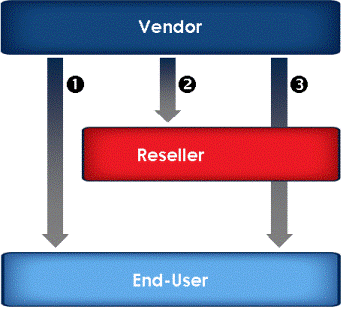It is a constant source of surprise to me how often Channel Managers (and I’m talking about intelligent, professional, and experienced individuals) inflict product presentations on their partners that they would never want to sit through themselves.
Ask someone what they hate about PowerPoint, and you nearly always get the same answers (too many slides, too much text, hard to read, slides too busy) and yet Vendors still continue to present 40-slide decks with 12 point fonts and convoluted animations.
However, the purpose of this article is not so much about the format of the presentation (we’ll leave that for another time) but rather about the content. Because the other surprising thing about Vendor presentations is that the message is not always tailored for partners. Again, these are intelligent individuals who know what partners want. If I ask them a question like “Why do partners buy product?” they answer correctly:
“Partners buy product so they can sell it”.
And when I ask my follow-up question, “Do partners buy your product because it’s the best, and the latest and the fastest and the greatest?”, again they answer correctly: “Not really; they have to be able to make money out of it, and it has to be easy for them to sell”.
So here’s the last question …
“How much of your presentation focuses on how great and feature-rich your product is, and how much focuses on helping partners sell it?”
From the presentations I’ve attended, there’s a lot of the former, and not much of the latter.
The first step to correcting this is to realise that vendors need to deliver three distinctly different messages as can be seen in this diagram:

1) To the End-user
(ie. Why a customer should buy your product)
- Typically this is a product-oriented Features/Benefits message
- The Customer expects the vendor to know their product better than anyone else, so they expect to receive detailed product information
- However, this Information is regarded as somewhat biased (they know you’ll never tell them that you’re not as good as your competitor)
This is the first and easiest message, and most vendors have tons of content around this.
2) To the Channel
(Why a Partner should sell your product)
- Typically this a programs message (ie. You have better margins, better support, better engagement, you generate leads, you provide account protection, etc)
- The Partner evaluates your profit model, whether customers will want your product, and whether you are a better company to deal with compared to your competitors
- Your total offering (the Product is only one element of the decision) is compared against offerings from other vendors to decide who they prefer to work with
Most of the time vendors do this well, although too often the presentation focuses on the functionality of the product and the message slips back into “You should sell our product because it’s the best”.
3) Through the Channel
(The key messages that you want your partners to deliver to the customer in order for them to sell your product)
- This should be a differentiating message (ie. Your message should not be about “what the product does”, but rather “what (say) three things our product does that the competition cannot do”
- You should also include information to help the partner identify and qualify an opportunity(what is the ideal customers profile(s), common applications of how your products are used, qualification questions, how to handle objections, etc)
- Because the Customer sees the Channel Partner as someone who can sell competing vendors, the information perceived as being unbiased
Please note: even though this ultimately is an end-user message, it is very different to the first message (ie. the one delivered directly to the End-user).
The first message is usually delivered using PowerPoint, and goes into lots of detail. However, most partners don’t use PowerPoint to present, so your message through partners needs to be shorter, snappier, easily memorised, and delivered over a coffee. If they can’t remember it, and be able to replay it without PowerPoint a week later, it’ll be forgotten.
One last comment I’ll make is that you shouldn’t try to hide your weaknesses, but rather, you should highlight them and teach partners how to address them. For example, read the following statements, and see which sounds better:
- Our laser printer prints at 20 pages per minute
- Our laser printer prints at 20 pages per minute, whereas our competitors have printers at the same price point that print at 24 pages per minute. But we have a much shorter start-up time, so for 90% of print jobs, our printer will print your document before theirs have even warmed up
The moral of the story is that partners aren’t stupid – they are just bombarded with so much information that they can’t possibly remember what every vendor tells them. So focus on the differentiators, describe realistic scenarios that paint memorable pictures in their minds, and create compelling presentations that they’re willing to sit through in order to learn your key messages (we’ll cover that last one next time)


